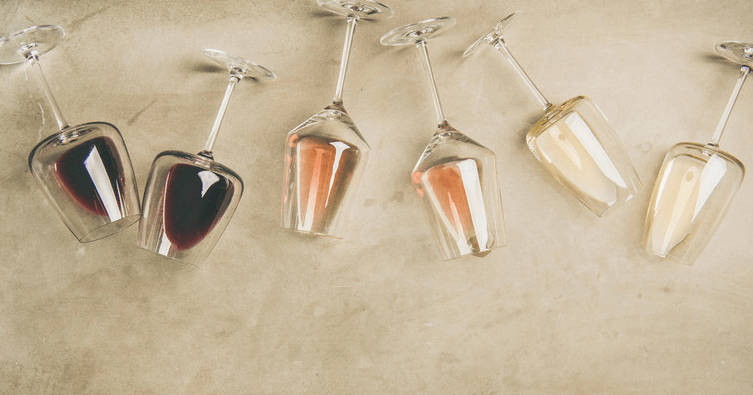Wine History: A Journey From Ancient Times To The Present

The journey of wine starts with a single grape, or at least it did in the late Stone Age. In 2012 archaeologists found remains of Vitis vinifera grapes and other ancient fruit, which were preserved thanks to the dry conditions inside the containers.
Wine has been around for centuries, with a rich history dating back to ancient times. Today, wine is enjoyed by people all over the world and is a popular choice for both casual and formal occasions. Whether you’re a wine lover or just looking to learn more about this popular beverage, this blog section is for you! In this section, we’ll take a journey through the history of wine, from its earliest beginnings to the present day. We’ll explore the different types of wines made throughout the ages, as well as the regions that are most famous for producing them. So grab a glass of your favorite wine and join us on this fascinating journey through time!
History of Wine
Wine has been around for centuries, and its history is as rich and complex as the beverage itself. Join us on a journey from ancient times to the present as we explore the history of wine.
We’ll start in ancient Egypt, where wine was an important part of religious ceremonies and everyday life. We’ll then move on to the Roman Empire, where wine was enjoyed by all social classes. From there, we’ll jump to medieval Europe, where winemaking became an art form. Finally, we’ll land in modern times, where wine is enjoyed by people all over the world.
So grab a glass of your favorite vino and settle in for a trip through the ages. Cheers!
How Wine Became Popular
Wine has a long and complex history, dating back thousands of years. It is thought to have originated in the Middle East, and there is evidence that it was being made and consumed there as early as 6000 BC. From there, it spread to other parts of the world, including Europe, China, and eventually the Americas.
How did wine become so popular? There are a number of factors that contributed to its widespread appeal. For one, it was (and is) a versatile beverage. It can be drunk on its own or used as an ingredient in cooking. It also has health benefits; moderate consumption of wine has been linked with lower rates of heart disease and other conditions.
Another reason for wine’s popularity is its social aspects. Drinking wine is often seen as a sophisticated activity, and it can be enjoyed in a variety of settings, from casual get-togethers to formal dinners. Wine also plays an important role in many cultural traditions, such as weddings and holidays.
If you’re interested in learning more about wine history, there are many resources available online and in libraries. You can also visit wineries and vineyards to get a firsthand look at how this popular beverage is made
The Decline of the French and Italian Winemakers
In the 18th and 19th centuries, the French and Italian winemakers were the undisputed masters of the wine world. But, as we all know, nothing lasts forever. These days, the French and Italian wine industries are in decline, while New World producers like Australia, Chile, and South Africa are on the rise. What happened?
There are a number of factors that have contributed to the decline of the French and Italian wine industries. One is competition from New World producers. As mentioned before, Australia, Chile, and South Africa are all making high-quality wines that are increasingly available on the global market. This has put pressure on the French and Italian producers, who have been forced to lower their prices in order to compete.
Another factor that has contributed to the decline of the French and Italian wine industries is changing consumer tastes. In recent years, there has been a shift away from red wine and toward white wine and sparkling wine. This has hit the French and Italian producers particularly hard, as they produce mostly red wines.
Finally, it’s worth mentioning that both France and Italy have been plagued by bad weather in recent years. This has led to lower-than-expected harvests,
Prohibition and the Rise of California Wines
During the early 20th century, America was going through a major social upheaval. One of the most controversial topics of the time was prohibition. Prohibition was the nationwide ban on the manufacture, sale, and transport of alcoholic beverages. The movement started in the late 1800s but gained momentum in the 1920s. Many people saw prohibition as a way to improve society by reducing crime and drunkenness. However, others saw it as a violation of personal freedom.
The debate over prohibition came to a head in 1919 when Congress passed the 18th Amendment, which made it illegal to manufacture, sell, or transport alcohol. The amendment went into effect in 1920. To enforce the ban, Congress passed the Volstead Act, which established penalties for violating the law.
The prohibition era was a difficult time for winemakers. Many vineyards were forced to close because they could no longer sell their wine. Some winemakers turned to make sacramental wines or fruit wines, which were not subject to the ban. Others moved their operations to other countries where prohibition was not in effect.
In the United States, the production of wine continued in secret during prohibition. Bootleggers smuggled wine from other countries or made their own
Conclusion
Wine has been around for centuries, and its history is as rich and complex as the drink itself. From its ancient origins to its modern-day popularity, wine has always been a part of human culture. Today, wine is enjoyed by people all over the world, and it shows no signs of slowing down. Whether you’re a fan of red or white, sweet or dry, there’s a wine out there for everyone to enjoy. So grab a glass and raise a toast to wine—the drink of kings and commoners alike. Cheers!
Checkout the website: wine history




